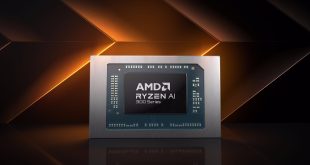Alongside the news that over 1,000 jobs would be lost to redundancy, last night's Q3 earnings call gave AMD the opportunity to discuss the changes it sees happening in the market – and how it sees itself ten years down the line. One thing was loud and clear, it won't be the PC business as we've known it. AMD is saying that over 20% of its revenues for 2013 will come from embedded (up from 5%) and that micro servers could contribute even more in 2014.
Windows 8 will launch in October 2012. At that point in time, AMD says that it will have move than 125 design wins. A design win means that a significant manufacturer has chosen to use an AMD processor in a product – and then to build a number of them. Design wins are the totem poll used by industry insiders to predict likely sales. Because these products will be actively sold on the shelves for 3 months or more, more design wins means more sales. In the home, we have next-gen gaming consoles and, globally, data will start to be moved around by micro servers.
But what products have been chosen?
When KitGuru revealed AMD's future roadmap plans back in February, there were many question marks. These are now firming up into real products with real sales to real customers. That means
AMD's announcement that Trinity sales are looking to ramp up 75% quarter on quarter, means that a lot of the positive news for AMD comes from its integrated APU products. Initially, that will be into traditional PCs and laptops – but the possibilities are endless.
Rory Read is predicting a big ramp up in tablet sales with the announcement of AMD's new Z60 product (1GHz APU with 80 Radeon graphics processing cores – all of which fits into a power envelope of just 4.5w at full speed and 0.75w when your tablet is idling). Judging from the serious lack of technical articles on the Z60 on the web – this hugely significant product seems to have had one of the quietest launches in AMD history. Which is strange, given its potential significance.
One of the biggest changes required for the future, moving toward a non-PC world, is the acceptance of lower operating margins for traditional products. Recent statements from Intel seem to indicate that the Core-production giant is confident that pricing will remain hard and that margins will stay high.
This assumption was directly challenged by Rory Read last night. He said that he was confident that price pressure would tell in the processor market and that ‘downward' was the only trend he could predict either for the average selling price on CPUs or the margins associated with them.
Read highlighted the fact that major customers had been very cautious about committing numbers to the p-coming launch of Windows 8 and that, as a result, sales would continue to be soft in the market.
Devinder Kumar went as far as saying that inventory control will be crucial going forward – and that getting stuck with product on the shelves during price reductions was something that he badly wants to avoid. With the overall quietness in the economy and the hard movement of customers away from traditional PCs toward tablets and other usage models means that AMD has no confidence that the traditional CPU market will ever come back.
Over the next 3 years, the single biggest revenue increase will come from the Cloud, AMD told us. Dr Lisa Su told listeners that she has teams putting special focus on micro servers and embedded technologies – and that these would be a significant part of the future for AMD.
From what we know, all of the next generation game consoles will move to AMD and its APU technology, which will begin to have impact toward the end of 2013. A separate SeaMicro team will be aiming to chip away [Pun intended – Ed] at Intel's traditional business. Significant revenues from SeaMicro are expected after the complete infrastructure is in place by 2014. Lisa Su said that having the hardware was not enough and that AMD needed a full set of software solutions to also be available – alongside a channel to sell all of that micro server goodness through.
Out of its traditional businesses – the only one where AMD is close to its own sales prediction is 3D graphics cards.

KitGuru says: The movement to cloud, tablets and embedded shows a very different future for AMD. It looks like Intel will have free reign in the shrinking PC market, but can projects like Ultrabook ensure continued growth for the world's number one CPU company?
Comment below or in the KitGuru forums.
 KitGuru KitGuru.net – Tech News | Hardware News | Hardware Reviews | IOS | Mobile | Gaming | Graphics Cards
KitGuru KitGuru.net – Tech News | Hardware News | Hardware Reviews | IOS | Mobile | Gaming | Graphics Cards



One comment
Pingback: AMD is preparing for a future non-PC | Tech News Pedia